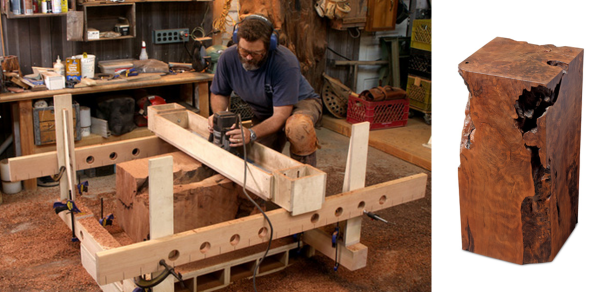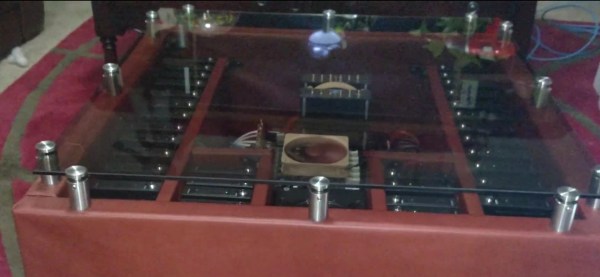[Robby Cuthbert,] an artist and designer based out of Fort Collins, Colorado is creating stable cable tables that are simultaneously a feat of engineering and a work of art.
[Cuthbert’s] tables are held together by 1/16″ stainless steel cables that exert oppositional tensions that result in a structurally stable and visually appealing coffee table. In his video, [Cuthbert] leads us through his process for creating his tables, step by step. [Cuthbert] starts by cutting out bamboo legs on his CNC mill. He then drills holes in each leg for cables and mounts each leg on his custom table jig. Then, he attaches the stainless steel cabling taking care to alternate tension direction. The cables are threaded through holes in the legs and affixed with copper crimps. After many cables, he has a mechanical structure that can support his weight that also looks fantastic. All in all, [Cuthbert’s] art is a wonderful example of the intersection of art and engineering.
If we’ve whet your appetite, fear not, we have featured many tension based art/engineering hacks before. You might be interested in these computer-designed portraits or, if the thought of knitting by hand gives you the heebie-jeebies, the Autograph, a string art printer might be more your style.
Video after the break.

















